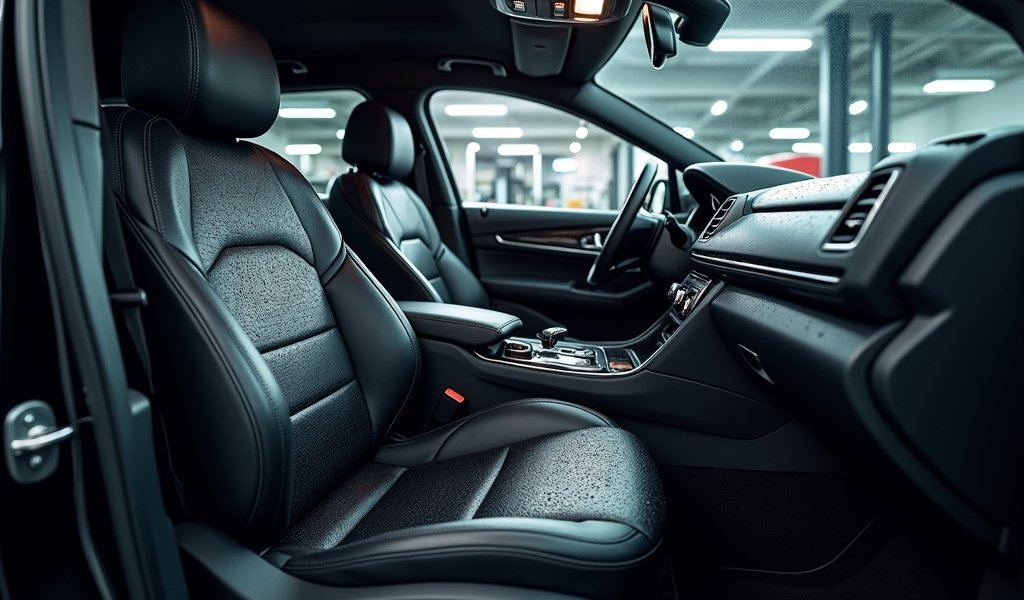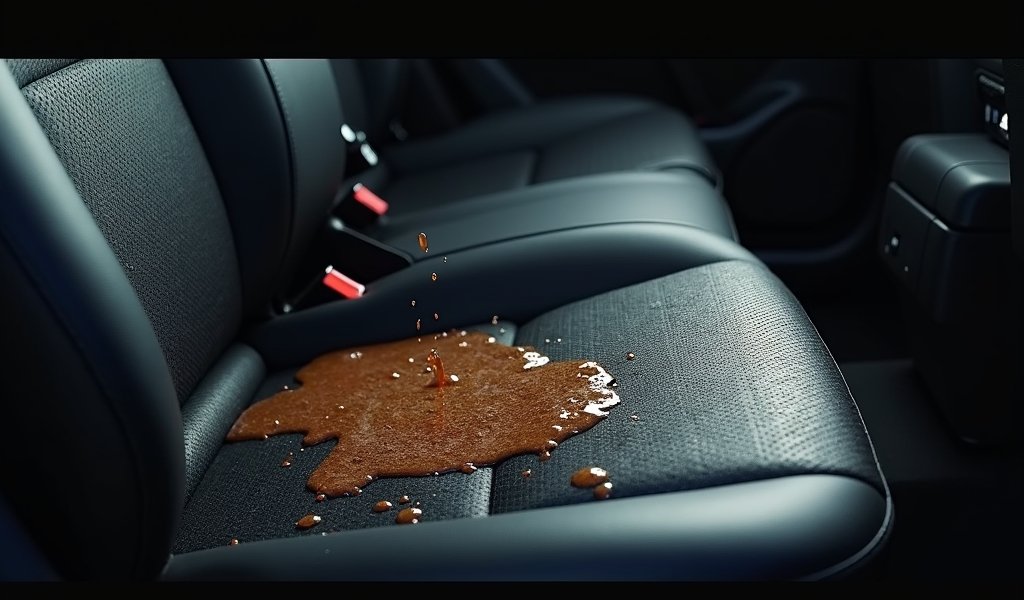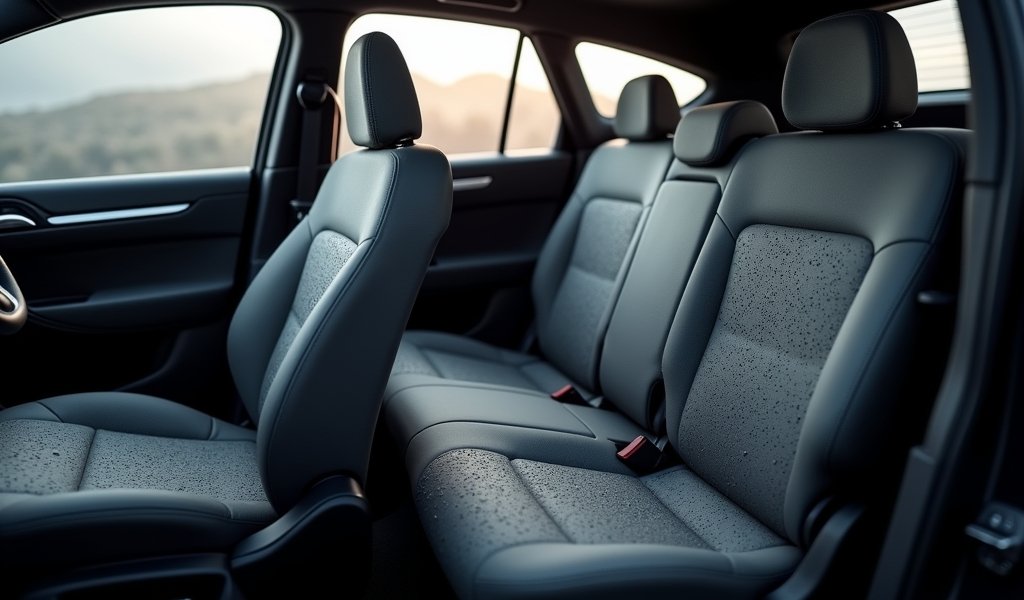Overview
Waterproof car seat covers provide essential protection against spills, moisture, and everyday accidents that can permanently damage upholstery and reduce vehicle resale value. The article explores various types (universal, custom-fit, and neoprene), materials (polyurethane-coated polyester, TPU, neoprene blends), proper installation techniques, maintenance practices, recommended brands, and cost considerations to help readers make informed decisions about protecting their car interiors.
Table of Contents
- Why Waterproof Car Seat Covers Are Essential
- Types of Waterproof Car Seat Covers
- Best Materials for Waterproof Car Seat Protection
- Installation Guide: Fitting Your Waterproof Covers Properly
- Maintenance Tips for Long-Lasting Protection
- Top Brands and Products Worth Considering
- DIY Temporary Waterproofing Options
- Cost Considerations When Shopping
- Conclusion
- Frequently Asked Questions
Why Waterproof Car Seat Covers Are Essential
Let’s face it—life happens in our vehicles. Coffee spills during morning commutes, kids drop juice boxes, and unexpected rain showers drench us before we climb inside. Without proper protection, these everyday incidents can permanently damage your car’s upholstery, leading to stains, odors, and eventually, reduced resale value.
As a mechanic who’s seen thousands of vehicle interiors over the years, I can tell you that waterproof car seat covers for spills aren’t just accessories—they’re investments in your car’s longevity. The average American spends around 8 hours per week in their vehicle, creating countless opportunities for accidents to happen.
Beyond the obvious protection from beverages, waterproof covers shield against other common threats like sweat after workouts, pet accidents during transportation, and even sunscreen or lotion transfer during summer months. Most factory car upholstery is surprisingly absorbent, making it difficult to fully extract liquids once they penetrate the surface.
What many drivers don’t realize is that moisture that seeps deep into seat cushions can eventually create mold and mildew issues that affect not only your car’s appearance but potentially your respiratory health. A quality set of waterproof covers creates a reliable barrier that keeps liquids on the surface where they can be easily wiped away.
Types of Waterproof Car Seat Covers
When shopping for waterproof protection, you’ll encounter several distinct styles, each offering different benefits depending on your specific needs:
Universal Fit Covers
These one-size-fits-most options typically feature elastic edges or straps to secure them to your seats. They’re budget-friendly and easily transferable between vehicles, making them ideal for temporary protection or rental cars. The downside? They rarely provide a perfect fit, which can lead to shifting, bunching, and occasionally reduced effectiveness against spills that might seep through gaps.
Custom-Fit Waterproof Covers
Made specifically for your vehicle’s make, model, and year, these premium options provide tailored protection that contours perfectly to your seats. They’ll include precise cutouts for headrests, armrests, and seat controls, ensuring comprehensive coverage and a factory-installed appearance. The superior fit means better spill containment, though you’ll pay considerably more for this custom protection.
Neoprene Seat Covers
The same material used in wetsuits makes an excellent waterproof car seat covering. Neoprene covers combine water resistance with comfort and insulation properties. They’re stretchy, conforming nicely to seat contours while offering a sporty aesthetic that many drivers appreciate. These covers are particularly popular among outdoor enthusiasts who frequently enter their vehicles with damp clothing.

Best Materials for Waterproof Car Seat Protection
Not all waterproof materials provide equal protection or durability. After years of seeing what holds up best in real-world conditions, I recommend focusing on these top-performing materials:
Polyurethane-Coated Polyester
This combination creates a flexible, breathable barrier that excels at repelling liquids while remaining comfortable against the skin. The polyurethane coating creates an impenetrable moisture barrier, while the polyester base provides structure and durability. These covers typically balance protection with comfort better than most alternatives.
Thermoplastic Polyurethane (TPU)
For ultimate waterproofing, TPU delivers exceptional performance. This advanced material creates a completely waterproof membrane that’s also remarkably thin and flexible. It won’t crack in cold temperatures like some cheaper plastics, and it resists punctures better than most competing materials. The downside is that 100% TPU covers can feel less breathable on hot days.
Neoprene Blends
While standard neoprene offers good water resistance, modern blends that incorporate additional waterproofing layers perform even better. These specialized fabrics maintain the stretch and comfort of traditional neoprene while adding enhanced liquid barrier properties. Many pet-friendly car seat covers use advanced neoprene blends that resist both water and claw punctures.
According to a Consumer Reports study on interior protection, covers with at least 600 denier thickness provide the best balance of waterproofing ability and wear resistance for daily use. Anything thinner may not withstand regular use patterns, particularly in family vehicles where covers face frequent challenges.
Fabric Considerations Beyond Waterproofing
When evaluating waterproof covers, also consider these secondary material properties:
- UV resistance (prevents fading and material breakdown)
- Breathability (reduces heat buildup and sweat accumulation)
- Texture (smooth materials are easier to clean but may be slippery)
- Fire resistance (important safety feature, especially in newer vehicles)
- Chemical resistance (protects against cleaning solutions and harsh spills)
Installation Guide: Fitting Your Waterproof Covers Properly
Even the highest-quality waterproof cover will fail if installed incorrectly. Follow these professional tips to ensure maximum spill protection:
Before You Begin
Start with thoroughly clean seats. Any dirt or debris trapped between your seat and the cover can create abrasion points that may compromise waterproofing over time. Use a vacuum with upholstery attachments to remove particles from seams and crevices before installation.
Universal Cover Installation
- Position the cover over the seat, aligning any headrest openings with your headrest posts
- Feed any straps through the gap between the seat back and bottom cushion
- Secure straps according to manufacturer instructions, typically around the back of the seat
- Adjust the cover to minimize wrinkles and ensure complete seat coverage
- Test the stability by pressing firmly on different areas of the seat
Custom Cover Installation
Custom covers require more precise fitting but provide superior protection:
- Remove headrests if required by manufacturer instructions
- Identify which cover corresponds to which seat (driver, passenger, etc.)
- Slide the cover over the seat back first, working from top to bottom
- Pull the seat bottom portion firmly into place, ensuring tight coverage
- Secure any zippers, Velcro attachments, or clips as directed
- Reinstall headrests through designated openings
A properly installed waterproof cover should have no loose sections or gaps where liquids could potentially reach your original upholstery. Take your time with the installation process—a few extra minutes spent on proper fitting can prevent costly damage down the road.
Maintenance Tips for Long-Lasting Protection
To maximize the lifespan and effectiveness of your waterproof car seat covers, implement these professional maintenance practices:
Regular Cleaning Protocol
Don’t wait for visible dirt to clean your covers. Establish a regular maintenance schedule based on your usage patterns. For daily commuters, a weekly quick-clean and monthly deep-clean keeps waterproofing materials performing optimally. When learning DIY car detailing tips, proper seat cover maintenance should be high on your priority list.
For cleaning most waterproof covers:
- Vacuum surface debris using a soft brush attachment
- Spot clean spills immediately with a microfiber cloth
- Use manufacturer-approved cleaning solutions only (harsh chemicals can damage waterproof coatings)
- Allow covers to dry completely before sitting to prevent moisture trapping
Addressing Wear Points
Pay special attention to high-friction areas where waterproofing typically fails first:
- Seat edges where you slide in and out
- Center sections bearing the most weight
- Areas near seat belt connections
- Seams and stitching lines
Inspect these zones monthly for signs of wear. Early intervention with appropriate repair products (available from most cover manufacturers) can extend protection significantly. Some waterproof covers even benefit from periodic treatment with fabric guard sprays designed for outdoor gear, which can restore water repellency to aging materials.

Top Brands and Products Worth Considering
After testing dozens of options and seeing which ones stand up to real-world abuse in customers’ vehicles, these brands consistently deliver exceptional waterproof protection:
WeatherTech
Their custom-fit SeatProtector line offers precision waterproofing with vehicle-specific designs. What sets them apart is their multi-layer construction that combines a waterproof middle layer with comfortable surface materials. The non-slip backing prevents shifting even during aggressive driving or with active children. They’re pricey but backed by outstanding warranty support.
Gorla
The Gorla Universal Fit Waterproof Seat Cover provides excellent value with neoprene construction that’s legitimately waterproof, not just water-resistant like many competitors. Their anti-slip backing and seat anchor system prevent the common problem of covers sliding around during use. The quick installation design makes them perfect for vehicles that need occasional rather than permanent protection.
FH Group
Their waterproof covers deliver impressive performance at budget-friendly price points. The Neo-Supreme line combines waterproofing with breathable materials that prevent the sweating effect common with less expensive plastic-backed covers. According to the National Highway Traffic Safety Administration, their designs also accommodate proper car seat installation, which many waterproof covers interfere with.
DIY Temporary Waterproofing Options
Not ready to invest in permanent waterproof covers? These temporary solutions can provide emergency protection:
Moving Blankets with Waterproof Backing
Several furniture moving blankets now come with waterproof backing. These thick, durable covers can be quickly thrown over seats when needed and removed when not in use. While not custom-fitted, they provide substantial protection for occasional use scenarios like transporting plants from the garden center or bringing home supplies during rainstorms.
Shower Curtain Liners
In a pinch, a new shower curtain liner can serve as an effective temporary waterproof barrier. Cut to size and secured with binder clips, this budget option provides surprisingly effective protection for one-time events. Just be aware that the plastic may be slippery and isn’t suitable for long-term use.
For those interested in more comprehensive interior protection, learning how to detail your car like a pro provides valuable techniques that complement seat protection strategies.
Cost Considerations When Shopping
Waterproof car seat cover prices vary dramatically based on several factors worth understanding before making your purchase:
Material Quality Differences
Entry-level waterproof covers (typically $20-40 per seat) usually feature single-layer construction with basic water resistance that may diminish after multiple cleanings. Mid-range options ($50-100 per seat) incorporate multi-layer designs with more durable waterproofing technologies. Premium covers ($150+ per seat) feature advanced materials like automotive-grade TPU with guaranteed waterproofing for the life of the product.
Universal vs. Custom Fit Economics
The price gap between universal and custom-fit covers is substantial, but so is the protection difference. Universal covers sacrifice complete coverage for affordability, while custom options provide comprehensive protection with a significant cost premium. For vehicles with expensive original upholstery, the investment in custom-fit protection typically delivers better long-term value despite the higher initial cost.
According to Kelley Blue Book research, maintaining pristine interior condition can preserve up to 10% of a vehicle’s resale value—a figure that often justifies investing in quality waterproof protection, especially for newer vehicles.
Conclusion
Waterproof car seat covers for spills represent one of the smartest preventative investments you can make for your vehicle’s interior. Beyond just protecting against everyday accidents, they preserve your car’s value, extend upholstery life, and provide peace of mind that allows you to actually enjoy your vehicle rather than constantly worrying about potential damage.
Whether you opt for budget-friendly universal covers or premium custom-fit solutions, the key is choosing materials with genuine waterproofing capabilities—not just water resistance—and ensuring proper installation that leaves no gaps where liquids can penetrate.
Remember that even the best covers require regular maintenance to maintain their protective properties. With proper care, quality waterproof seat covers can deliver years of reliable protection against everything from coffee spills to muddy sports equipment, keeping your vehicle’s interior looking and smelling fresh regardless of what life throws your way.
Frequently Asked Questions
Are waterproof car seat covers safe to use with heated seats?
Most premium waterproof covers are heated-seat compatible, but always check manufacturer specifications. Covers with thin, thermally conductive materials work best with heated seats.
Will waterproof covers make my seats uncomfortable in hot weather?
Quality covers with breathable waterproof membranes minimize heat buildup. Look for covers that specify “breathable waterproofing” rather than solid plastic backing.
Can I install car seats for children safely over waterproof covers?
Only use covers specifically tested and approved for use with child safety seats. Many universal waterproof covers create unsafe slippage that can compromise child seat stability.
How often should waterproof covers be replaced?
Quality covers typically last 3-5 years with regular use. Replace them when you notice cracks, thinning material, or reduced water repellency that doesn’t improve with cleaning.
Will waterproof covers damage leather upholstery?
Modern waterproof covers are designed to be safe for all upholstery types including leather. Ensure the cover has non-abrasive backing and avoid covers with rough seams that could cause friction damage.

